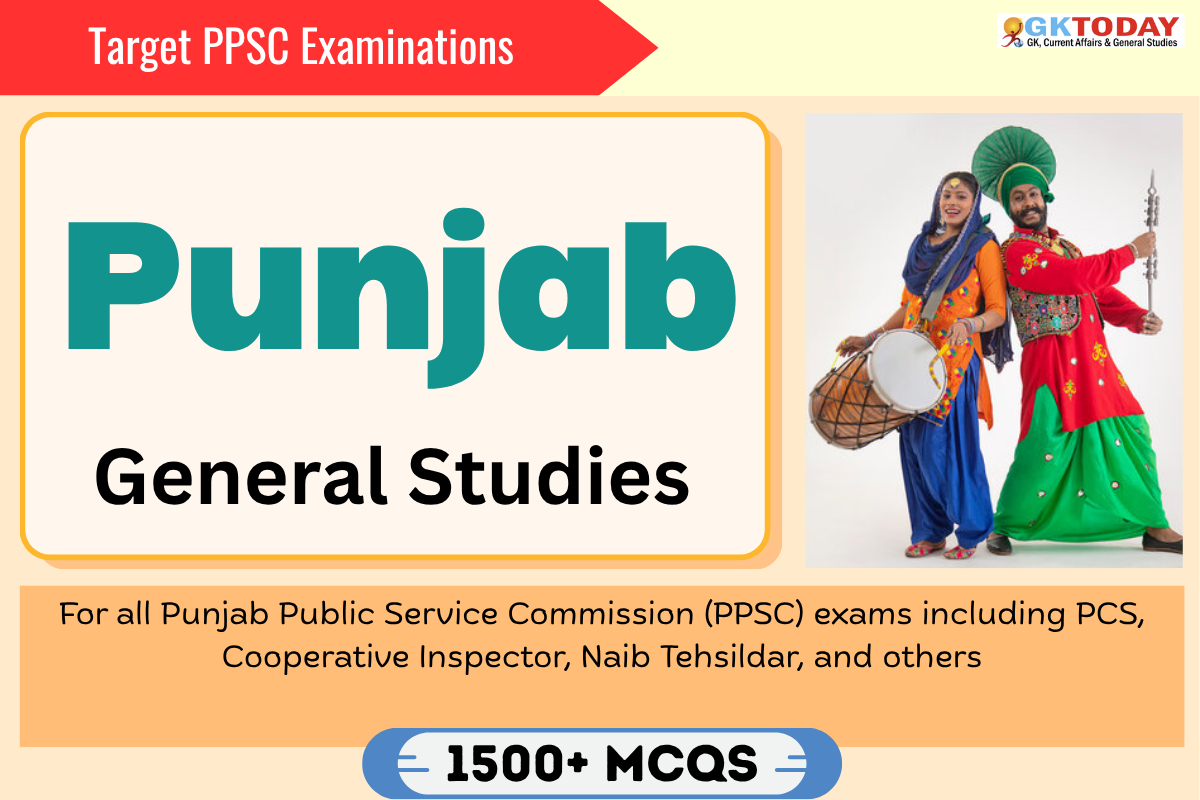States PCS: Punjab GK Questions for PPSC Examinations
For all Punjab Public Service Commission (PPSC) exams including PCS, Cooperative Inspector, Naib Tehsildar, and others.
1. Jesuit Antoni de Montserrat served at the court of which Mughal emperor?
[A] Jahangir
[B] Shah Jahan
[C] Akbar
[D] Babur
Show Answer
Correct Answer: C [Akbar]
Notes:
Antoni de Montserrat, a 16th-century Catalan Jesuit, served at Akbar’s court, wrote “Mongolicae Legationis Commentarius,” learned Persian, participated in court missions, mapped northern India and the Himalayas, and significantly influenced early European perceptions of Asia and the Mughal Empire.
2. Who signed Malerkotla’s accession to India in 1947?
[A] Nawab Iftikhar Ali Khan
[B] Maharaja Bhupinder Singh
[C] Maharaja Yadavindra Singh
[D] Sir Muhammad Ahmad Ali Khan
Show Answer
Correct Answer: D [Sir Muhammad Ahmad Ali Khan]
Notes:
Sir Muhammad Ahmad Ali Khan was the last Nawab of Malerkotla; he signed its accession to India, modernized administration, minted unique coins, maintained harmony during Partition, and ruled from 1908–1947. Nawab Iftikhar Ali Khan was his successor.
3. Gulab Kaur was associated with which movement during Indian freedom struggle?
[A] Ghadar Movement
[B] Non-Cooperation Movement
[C] Quit India Movement
[D] Khilafat Movement
Show Answer
Correct Answer: A [Ghadar Movement]
Notes:
Gulab Kaur, born in Punjab, was a prominent member of the Ghadar Movement. She distributed arms and literature, mobilized Indian masses, and was arrested for sedition. The Ghadar Movement was significant for inciting revolt against British rule among Indian expatriates, especially in North America and Southeast Asia.
4. Identify the prominent editor and freedom fighter from Punjab based on the following information:
- He was associated with the Shiromani Gurudwara Parbandhak Committee and Shiromani Akali Dal.
- Edited the revolutionary paper Kirti (1925) and communist paper Jang-i-Azadi (1943).
- Led Kirti Kisan Party and Naujawan Bharat Sabha; imprisoned in the Meerut Conspiracy Case.
Select the correct option from the codes given below:
[A] Kartar Singh Sarabha
[B] Baba Gurmukh Singh
[C] Sohan Singh Josh
[D] Bhagat Singh
Show Answer
Correct Answer: C [Sohan Singh Josh]
Notes:
Sohan Singh Josh (1898–1982) was a key Punjabi communist activist and freedom fighter. He edited the revolutionary newspapers Kirti and Jang-i-Azadi, was active in the Akali movement, joined the Shiromani Gurudwara Parbandhak Committee and Shiromani Akali Dal, led the Kirti Kisan Party and Naujawan Bharat Sabha, and was imprisoned in the historic Meerut Conspiracy Case.
5. Who composed the bani ‘Gatha’ in Guru Granth Sahib (ang 1360-1361)?
[A] Guru Tegh Bahadur
[B] Guru Nanak Dev
[C] Guru Arjan Dev
[D] Guru Gobind Singh
Show Answer
Correct Answer: C [Guru Arjan Dev]
Notes:
Gatha, found on ang 1360-1361 of Guru Granth Sahib, was composed by Guru Arjan Dev. This bani contains 24 saloks in the extinct Gatha language, which blends Sanskrit, Prakrit and Pali, and emphasizes simran, sangat, and devotion. The Gatha form is rare in Sikh scripture.
6. Which Sikh ruler captured Sangni Fort in 1814?
[A] Maharaja Kharak Singh
[B] Maharaja Gulab Singh
[C] Maharaja Ranjit Singh
[D] Maharaja Sher Singh
Show Answer
Correct Answer: C [Maharaja Ranjit Singh]
Notes:
Sangni Fort, near Rawalpindi, was captured by Maharaja Ranjit Singh in 1814 during Sikh expansion. It was used for regional control and tax collection. The fort, now in Pakistan, still has intact exterior walls but its interior has changed due to the shrine of Sahibzada Abdul Hakeem.
7. Which of the following are prominent types of early Sikh religious literature?
- Janamsakhis
- Gurbilas
- Vaaran
Select the correct option from codes given below:
[A] Only 1, 2 & 3
[B] Only 1 & 2
[C] Only 2 & 3
[D] Only 1 & 3
Show Answer
Correct Answer: A [Only 1, 2 & 3]
Notes:
Janamsakhis are biographical accounts of Gurus’ lives, Gurbilas are Sikh chronicles detailing Gurus’ lives and teachings, and Vaaran are long form poetic compositions about Sikh theology and history. All three are key types of early Sikh literature, each serving distinct literary and religious functions in the Sikh tradition.
8. Consider the following pairs regarding eminent exponents and their respective Hindustani Gharanas:
- Ustad Bade Ghulam Ali Khan – Patiala Gharana
- Pandit Bhimsen Joshi – Kirana Gharana
- Ustad Amir Khan – Indore Gharana
Which of the above pairs is / are correctly matched?
[A] Only 1 & 2
[B] Only 2 & 3
[C] Only 1 & 3
[D] 1, 2 & 3
Show Answer
Correct Answer: D [1, 2 & 3]
Notes:
All pairs are correctly matched. Ustad Bade Ghulam Ali Khan was a doyen of the Patiala Gharana; Pandit Bhimsen Joshi was renowned for his association with the Kirana Gharana; and Ustad Amir Khan founded and was associated with the Indore Gharana. Each contributed significantly to the propagation and evolution of their respective gharanas in Hindustani classical music.
9. Who was the first Sikh soldier awarded the Victoria Cross for gallantry?
[A] Subedar Joginder Singh
[B] Sepoy Ishar Singh
[C] Captain Umrao Singh
[D] Major Somnath Sharma
Show Answer
Correct Answer: B [Sepoy Ishar Singh]
Notes:
Sepoy Ishar Singh received the Victoria Cross in 1921 for bravery during the Waziristan Campaign, becoming the first Sikh recipient. He recovered a gun under heavy fire after being wounded, shielded medical personnel, and received later honors including the OBI with the title Sardar Bahadur.
10. Where is the Guru Hargobind Thermal Plant located in Punjab?
[A] Patiala
[B] Jalandhar
[C] Lehra Mohabbat
[D] Amritsar
Show Answer
Correct Answer: C [Lehra Mohabbat]
Notes:
GHTP Lehra Mohabbat is situated near Bathinda, Punjab, on NH 7, with a 920 MW capacity. Operated by Punjab State Power Corporation Limited, it is named after Guru Hargobind Ji, and draws water from the Bathinda Branch, Sirhind Canal. Main equipment supplied by BHEL.

